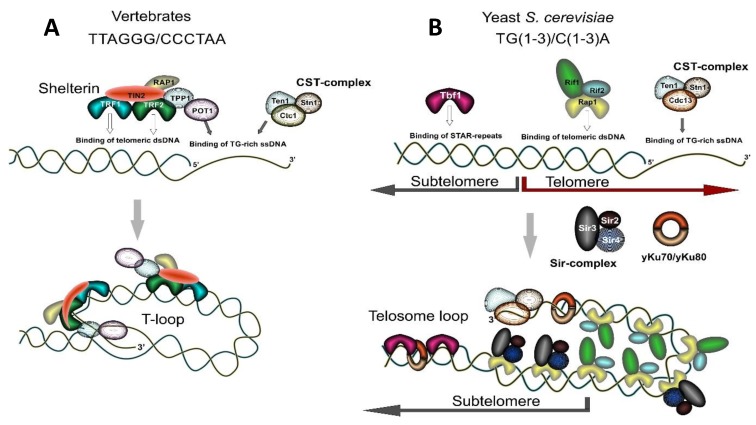Figure 1.
Abridged scheme of telomere organization in vertebrates and in budding yeast showing major telomere-specific protein. (A) Schematic representation of the shelterin complex and CST-complex bound to a vertebrate telomere. TRF1 and TRF2 proteins bind to the double-stranded telomeric DNA, POT1/TPP1 and CST-complex bind to the G-rich single-stranded telomeric overhang. Invasion of the G-rich overhang into the double-stranded telomeric repeat transforms this protein-DNA complex into a lariat-like structure called a T-loop. Nucleosomes and secondary protein factors implicated in telomere maintenance are not shown. (B) Proteins specific to yeast telomeric repeats include Rap1 which binds to the double-stranded telomeric repeat and recruits Rif1 and Rif2 or Sir-proteins, and CST-complex bound to the G-rich single-stranded overhang. The Tbf1 protein binds to human telomeric repeats, called STAR-repeats, located at subtelomeric DNA regions. Yeast telomeres can also form a folded-back structure, called telosome, which is stabilized by protein-protein interactions. Sirtuins and Yku70/Yku80 heterodimer participate in telosome formation and telomere maintenance in yeast.

